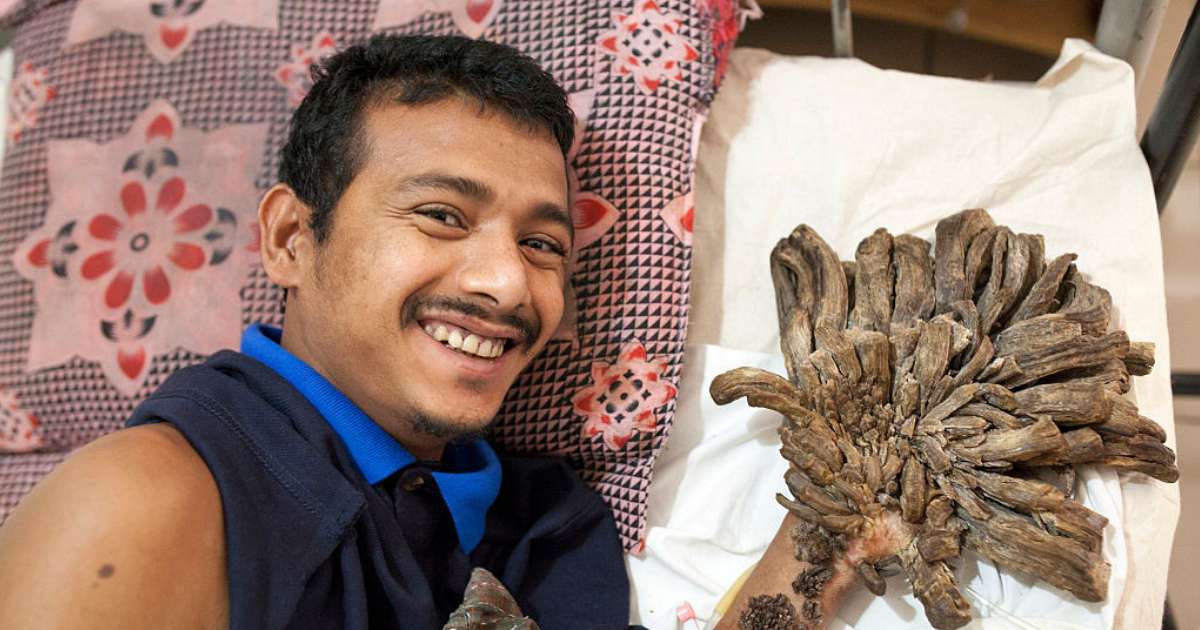Abul Bajandar, a Bangladeshi citizen known as "Tree Man," is back in the hospital. Bajandar lives with epidermodysplasia verruciformis, a rare disease which results in extreme wart-like growths across his body.
Bajandar is one of the most notable cases.
Epidermodysplasia verruciformis, otherwise known as "treeman syndrome" is an extremely rare autosomal recessive hereditary skin disorder. The condition is caused by a defect in the immune system which increases one's susceptibility to HPV, or human papilloma virus. This, in turn, leads to chronic HPV infection, skin lesions, and an increased likelihood of developing melanoma.
Bajandar, a 28-year-old father from the small town of Khulna, was admitted to Dhaka Medical College and Hospital and was diagnosed with the condition in January 2016. He underwent at least 25 surgeries for the removal of the warts––which amounted to roughly 11 pounds.
Unfortunately, the condition has worsened.
Bajandar first noticed the lesions when he was around 10-years-old. The growths eventually encompassed his hands. He was unable to continue working as a rickshaw driver and needed assistance with eating, drinking, brushing his teeth, and even showering.
"I want to live like a normal person. I just want to be able to hold my daughter properly and hug her," he told CNN in 2016.
Bajandar's case prompted doctors at the hospital to form a medical board for his treatment. The initial surgeries were considered a success.
Bajandar voluntarily skipped treatment after May 2016, according to one doctor.
"It's a complicated case and we were making progress but he left to go home. I requested him many times to come back but he didn't," said Dr. Samanta Lal Sen, coordinator at the Burn and Plastic Surgery Unit of Dhaka Medical College and Hospital. "He came back to the hospital on Sunday with his mother. He should have come here six months back. He came too late."
The warts have since spread to Bajandar's feet and other parts of his body. Dr. Sen says the government bore the cost of Bajandar's treatment in 2016 and will do so again.
Bajandar is probably the most recognizable face with the condition, but there have been other notable cases, most of which have affected men. In January 2017, it was reported that a 10-year-old girl in Bangladesh by the name of Sahana Khatun was diagnosed shortly after lesions developed on her body. Her case likely marked the first time the disease had been diagnosed in a female, according to the BBC.
We wish Bajandar a steady recovery. This Twitter user said it best:
 COMICSANDS
COMICSANDS percolately
percolately georgetakei
georgetakei secondnexus
secondnexus george's picks
george's picks













Older Woman's Facebook Post Showing Off Dress Met With Rude Comments From Other Women